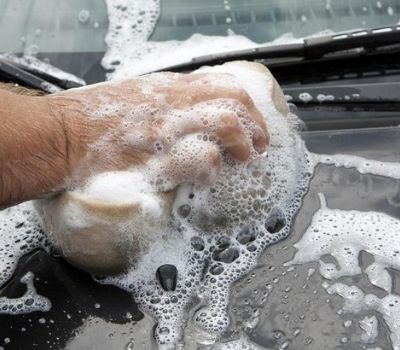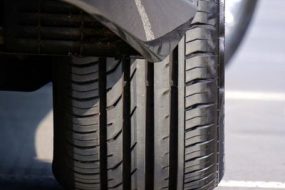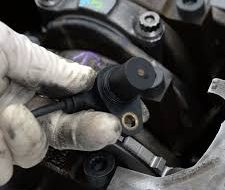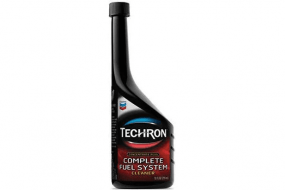
A windshield is a part of the vehicle that allows the driver to get a clear view of the road and prevents dirt, and dust from getting to its occupant. With the dirt and dust, a windshield is likely to gather per drive, there is a need to clean it at all times with a cleaning liquid that will leave it sparkling and without streaks.
Cleaning a windshield is a job that shouldn’t be taken lightly because cleanliness contributes to how easy it will be for a driver to drive and see the road ahead. Since Windex is also a cleaning liquid, can I use Windex on my car windshield?
Yes, Windex can be used on a car’s windshield but it is not advisable to use Windex with ammonia. Ammonia has been associated with some damages done to certain parts of the car and should be avoided at all costs.
What is Windex Made of?
Windex is a cleaning liquid majorly used in cleaning glass surfaces. The chemicals contained in the liquid vary according to the percentage of each and the function.
Listing the chemicals according to their percentage, we have; water as its prime ingredient, 0.1% sodium lauryl sulfate, 0.01% calcium, 4.0% isopropyl alcohol, 1% ethylene glycol monobutyl ether, 1% dye, 0.01% perfume and 0.05% of 28% ammonia in the case where Windex contains ammonia.
- According to the functions of each chemical in Windex, Isopropyl alcohol is a chemical that removes stains quickly without leaving smudges behind.
- Ethylene glycol monobutyl ether acts as a surfactant, detergent, and solvent, it also helps in dissolving dirt quickly.
- Perfume is also known as fragrance is inclusive to mask odor and leave a nice smell behind.
Some of these chemicals are solvents while others are surfactants, both work hand in hand to dissolve fat, grease, and dirt from glass surfaces.
Can I Use Windex on my Car Windshield?
Yes, you can use Windex on a car windshield but not Windex containing ammonia. Using Windex containing ammonia on a windshield isn’t safe as it is said to do more harm than good.
Some say it is safer to use Windex outside the windshield than inside but the truth is, so far it contains ammonia it is not safe for use both inside and outside.
Ammonia is a harsh chemical that may harm other surfaces of the car such as the windshield wiper, rubber, and even the paint job while on the inside, leather and plastic surfaces can be harmed leaving them loose and detached.
It can also leave streaks and smudges on the car when it comes in contact with the sun before it gets wiped off. Streaks on the windshield aren’t a driver’s friend as it causes a glare while driving.
Windex with ammonia is also not good for tinted windshields, the ammonia present causes the tint on the windshield to break and fade. You can decide to use Windex on your window if you plan on removing the tint very soon.
However, there are other schools of thought that are of the opinion that ammonia does not cause any harm to leathers, plastics, rubber, and paint job in and outside the car unless they are already old and dried out.
What Can Happen if you Use Windex on a Car Windshield?
Nothing really happens when you use Windex on a car windshield other than it removing stains and dirt and then leaving you with a clean surface.
However, the same cannot be said for Windex which contains ammonia, although there hasn’t been substantial evidence to back up the claim of damages ammonia causes on windshields, here are some of the things that can possibly happen.
Windex leaves a streak on the windshield which causes a glare when driving, a glare makes it impossible for the driver to focus on the road ahead.
On the tinted windshield, it isn’t safe to use Windex on a tinted windshield if it was done by a third party i.e. persons other than the manufacturing company. Ammonia Windex is said to cause breakage in the tint, even fading.
It can cause leathers and plastics in the car to detach or loosen from their hold and also peeling or fading of old paint jobs.
Can I Use Windex Instead of Windshield Wiper Fluid?
No, Windex shouldn’t be used instead of windshield wiper fluid. Using Windex instead of a windshield wiper fluid will only result in your spending more money to repair and replace the various damages that will be done.
Windshield wiper fluid is a fluid made specifically for windshield cleaning which makes it the ideal and safe cleaning liquid.
Using Windex on the windshield could cause damage to the washer system including its leather and rubber and it may dry out the important component of the windshield like the washer nozzles. Because of the ammonia likely present in Windex, it is an enemy to your car wax.
Also, be careful with the type of Windex you use on your windshield to avoid replacing your windshield in no time as a result of damages caused by the wrong use of Windex. Driving with a cracked windshield is never the best idea.
What is the Best Thing to Clean Windshield With?
Windshield Washer Fluid is the best when it comes to cleaning the windshield as it was made majorly for that purpose. It does a better job of cleaning than any other cleaner can do.
The fluid is delivered to the windshield through the wiper from its reservoir at the back of the engine bay. The reservoir is in a way that allows you to know when the fluid is low and needs refilling. Refilling the fluid reservoir is quite easy and can be done in a few minutes.
Depending on the weather condition the washer fluid may need to be preheated before it is delivered to the windshield.
It is possible for the fluid to freeze when it is diluted or at a cold temperature, alcohol is one way to prevent the fluid from freezing.
Conclusion
Windshield washer fluid works when the car is been driven. There are many brands and forms of washer fluid. Some fluid requires that you dilute before use while others come already diluted.
In order to reduce or prevent freezing of the fluid, some people add anti-freeze or methylated spirit. You can as well leave the car in the sun for some time or warm it up for some minutes.
Alcohol can only prevent the fluid from freezing when in the reservoir, once it gets on the windshield it evaporates and leave water in its place. The water is what freezes on the windshield in cold temperatures.
There have been suggestions here and there of the best washer fluid probably based on different product review but the truth is you can only recommend what works for you and what works for you may not work for others.









